Keeping Lebanon bologna alive: How Seltzer's has thrived for 121 years & looks to future
By the slice, pound, or even now by the bag, Seltzer's Smokehouse Meats has been a household name in Lebanon County for 121 years with its regionally unique flavor of bologna that has shown up for lunch, dinner, New Year's Eve − and even atop a 150-foot sandwich.
But for Seltzer's current owner, it's not just about the meat. It's about the people and the generations of community behind it.
For all those years, the business has stayed in the family. Current owner Austin Wagoner bought the business in 2019 from his maternal uncle, Craig Seltzer, who himself inherited the business from Wagoner's grandfather, Jack Seltzer, who inherited it from Harvey Seltzer − who started the business in 1902.
Weathering well over a century of history, all at its home location in Palmyra, Seltzer's has now seen two global pandemics, two world wars, briefly having to shut down during World War II because of sugar rationing, as well as countless technological advances.
Wagoner, who previously worked in finance in New York City , immediately fell in love with the legacy of Seltzer's after initially deciding to trying it out for two years.
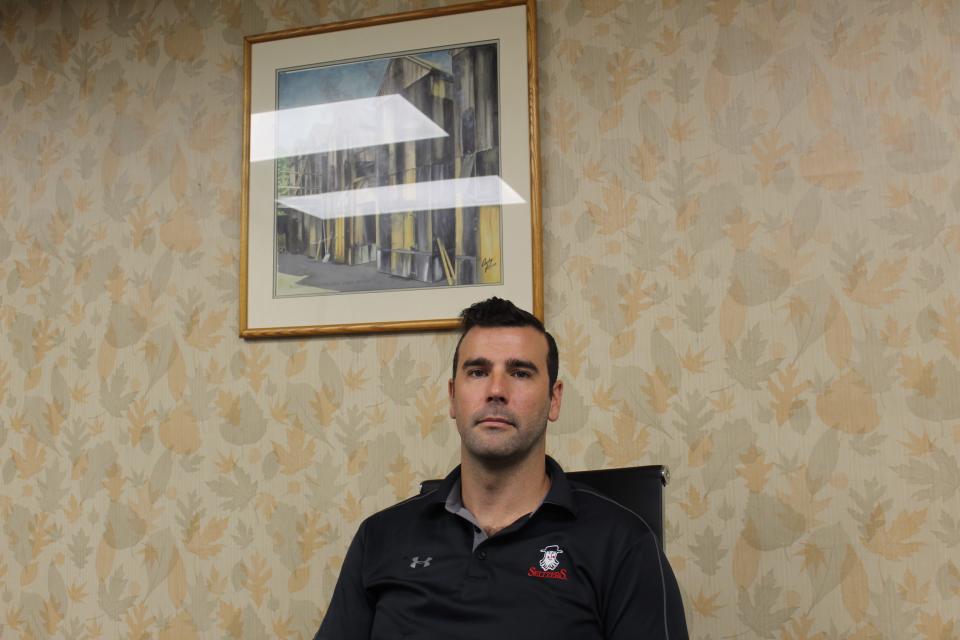
During a summer while he attended college at Penn State, Wagoner worked at Seltzer's, spending time in every role of the floor, learning the ropes of each step in the process of bologna making.
In all that time, much of what makes Seltzer's so special has more or less stayed the same. The recipes and processes have developed somewhat, but the smokehouses and people have remained in Lebanon County.
Family legacy
Beyond their closely guarded family recipes, the central process of smoking meats, and a developed flavor profile uniquely made in Central Pennsylvania, the legacy of Seltzer's Bologna touches generations of community members.
"It's something I'm definitely proud of. We all have to figure out where our spot is in life − and what we're doing and how we're going to contribute to the world. For me, this is a beautiful opportunity for me to have an impact on the local community here, for me to have an impact on the employees who have been loyal to my family forever, multiple generations."
"So it's a responsibility, but it's one I'm really enjoying being a part of."
Some employees at Seltzer's have been around for multiple generations of owners; others have had multiple generations of family members work there.
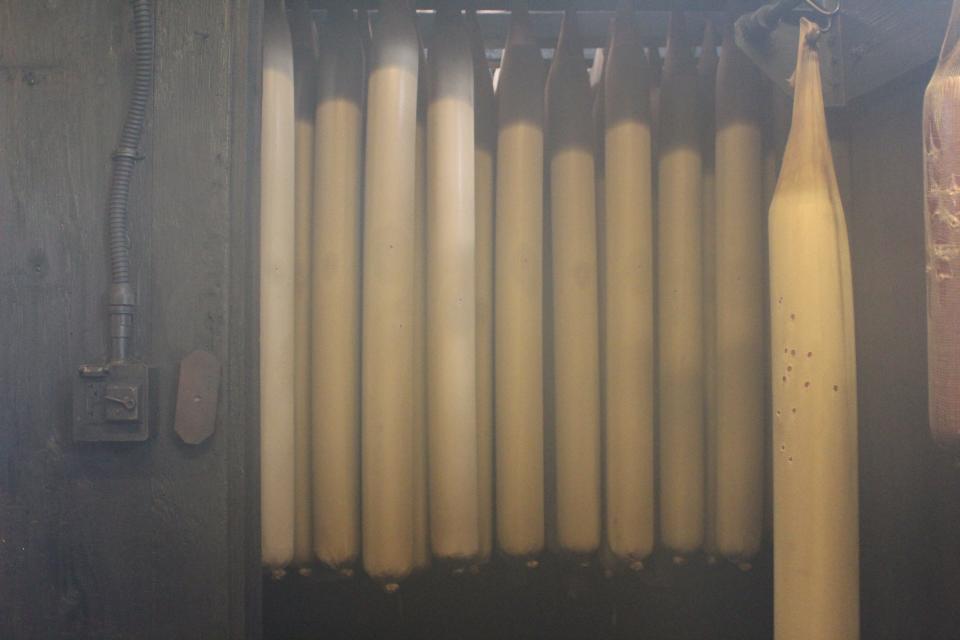
Then came the pandemic
One of the biggest challenges Seltzer's has faced came only months after Wagoner bought the business.
Wagoner described the first few weeks of the Covid pandemic trying to decide how to proceed with employees potentially at risk.
"There's no book for how you make that decision. No one had ever done that. Last time that had happened was in early 1900, the Spanish flu, that was the last time there was anything similar. I like to try and look at what can I tie to in history to try and go back to. There's no management books from back in 1918 that tell you about how to handle your workforce. People just went to work, and that was it."
Instead, he looked toward the future, asking himself, "20 years from now, looking back, what can I live with?"
For those that felt like they needed to stay home, Seltzer's paid two-thirds to 75% of their pay for that month, while those that chose to stay received a 15% increase in pay.
Because Seltzer's continued operating, and because of the strong relationships it built with local suppliers for beef, spices, sugar and even wood, it was able to fill 100% of orders during that time.
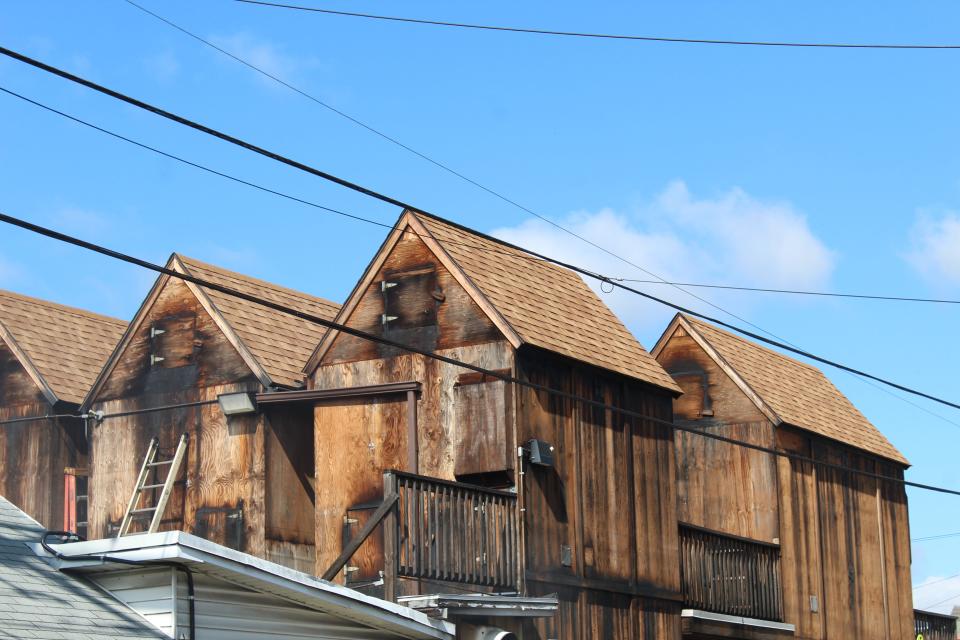
How do they make it?
What began as a local flavor with roots in German ancestry is available and enjoyed all across the country.
Wagoner explained that part of his uncle's contribution is that he was able to pull away from private label distribution, or bologna that would be produced at Seltzer's and sold across the country under different labels for other companies, and Seltzer's is now recognized nationally as the face of Lebanon bologna.
The process of producing that flavor is a 24/7 endeavor, with fires being tended all hours of the day. But before it can be smoked, the raw meat, along with spices and starter culture, is ground together in a factory in Lebanon City before being trucked to Palmyra.
Once at Palmyra, the meat is stored in a cooler overnight until it's ready to go through the stuffing room where it's given its second, finer, grinding and metal detecting, then checked for bones before coming out of the other side and into stockings.
Those tubes of meat are taken directly to the smokehouse, where they are hung high above the fire pit and sit for two to three days at a internal temperature of 120 to 170 degrees, depending on the type of bologna.
There's always a smokemaster on scene, controlling all variables of the smokehouse, ensuring the end product is up to standard.
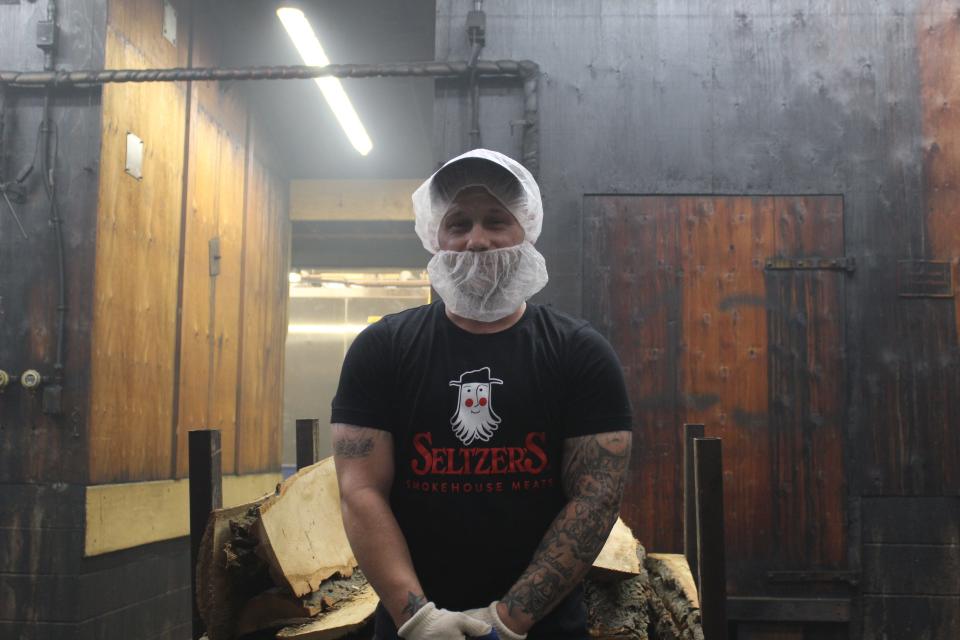
Three to four smokehouses are started every day, with the capacity hold 1,200-1,700 pieces of bologna each, using scrap wood pieces from local lumber yards.
"It's an interesting conversation internally between our quality control and the smokemasters as to whether this is an art or a science in how we do it," Wagoner said. "I'm a firm believer it's both."
Smokehouses can be peculiar, and trying to get one to respond today the same way it did yesterday with different wind conditions or temperatures requires a level of knowledge and intuition that only comes with years of practice.
Spending just a short amount of time in the smokehouse, the smokey smell of Lebanon bologna clings to clothes, hair and even skin.
The finished product is dropped from the smokehouse, placed into racks and cages, and once more cooled until it's ready to be taken to the slicing, jerky or deli departments where they're put into their final form and transported to the warehouse next door.
Making bologna snackable
"If you look at, kind of the piece that I'm looking to set up, Craig had his impact on the business, Jack had his impact, as I'm looking forward my biggest thing is making sure this place is here for the next 120 years," Wagoner said. "How do I set us up with a strong base to make sure that the business survives."
Wagoner has started initiatives to modernize the product.
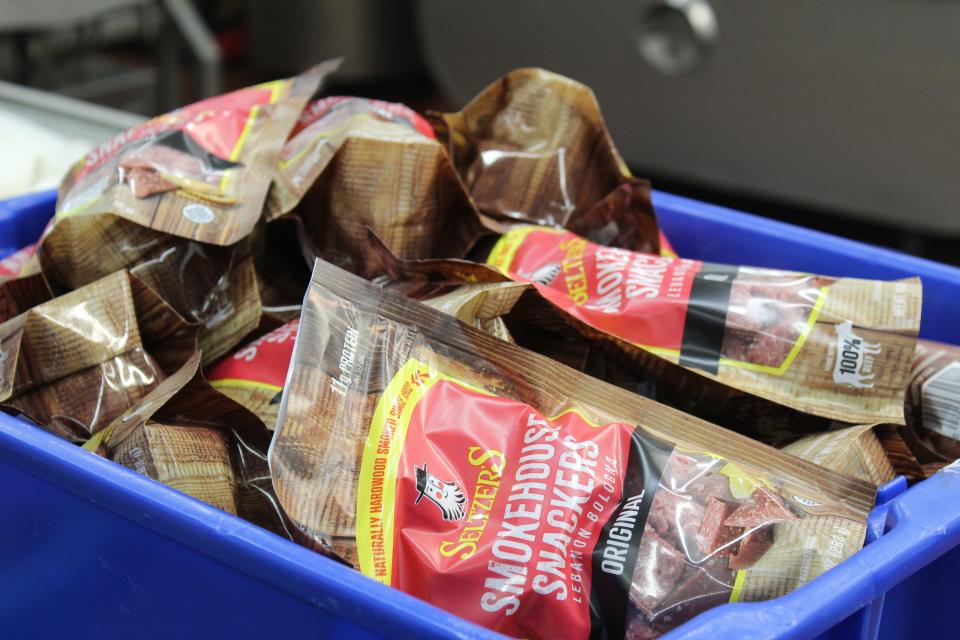
The new Smokehouse Snackers, for example − small, chunked up bits of bologna packed in 10 ounce bags for a quick grab and go − were crafted for an on-the-go person.
"I was having a hard time figuring out how I wanted to eat the product. If I'm having a hard time, other people have to be as well. 'Cause I'm constantly moving, I don't really sit down for a lunch, so the opportunity to eat it on a sandwich wasn't really there for me, and I love the product, so how do you put it into a snackable format."
The company also launched bologna jerky, bologna jerky bites, and beef sticks for similar grab-and-go utility.
On the other end of the spectrum, Seltzer's has put out smokehouse grillers, thick-cut slices of bologna that can be put on the grill.
The product was intended to be a summer season offering, but they've decided to keep the product year round after positive feedback from the few stores they stocked with the item.
"That's really the first phase of what we're doing, is we have this great flavor but how do you just change the format so people can eat it in different ways at different times throughout the day," he said.
Wagoner explained that there are lots of ways to workshop ideas for new products. The idea for jerky, the first new project, had been floating around for roughly 15 years before he started. Several test runs were produced that represented the flavor profile of the flagship product, but questions of how to reliably and efficiently replicate that quality on a large scale still had to be answered.
The key to answering all those questions, he said, is making sure that all the right people are in the room and that they're all on the same page with what the end goal is.
A pillar of the community
Prior to the jerky, the last big new product Seltzer's had released was the chipotle flavor, more than 10 years earlier.
Wagoner believes these new products will keep Seltzer's and its employees successful for another 120 years.
"I want Seltzer's to be stable," Wagoner said, "I want it to be a pillar of the community. Those are the two most important things to me. I want people to continue to be at the center focus of how we operate."
"Kind of the rest from that, can be a little bit flexible."
Daniel Larlham Jr. is a reporter for the Lebanon Daily News. Reach him at DLarlham@LDNews.com or on X @djlarlham.
This article originally appeared on Lebanon Daily News: Seltzer's Smokehouse Meats has made Lebanon bologna for 121 years
